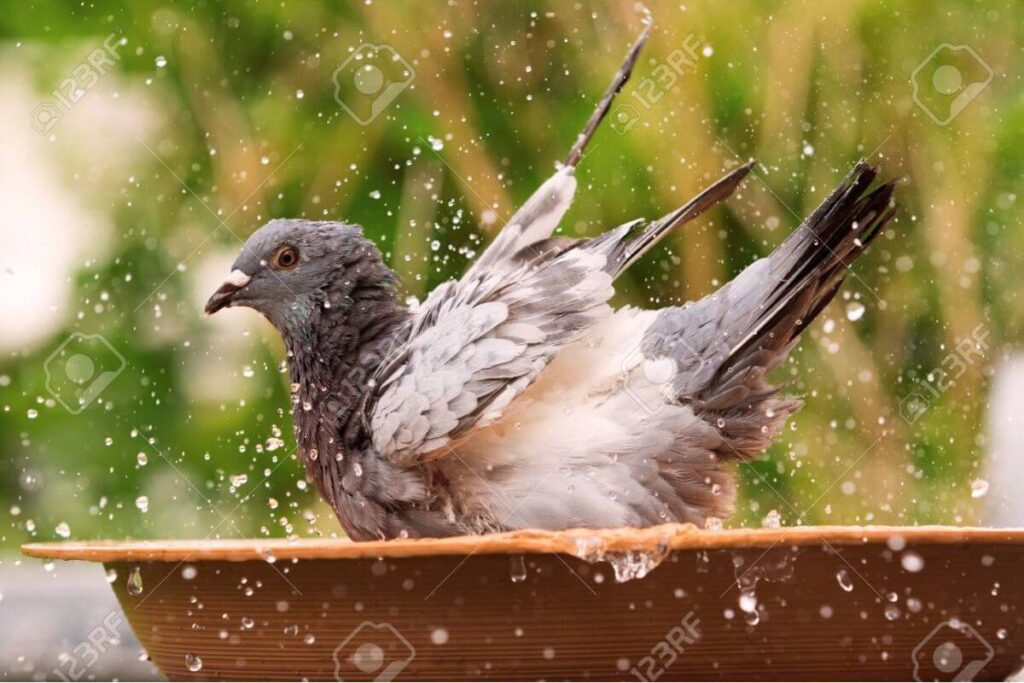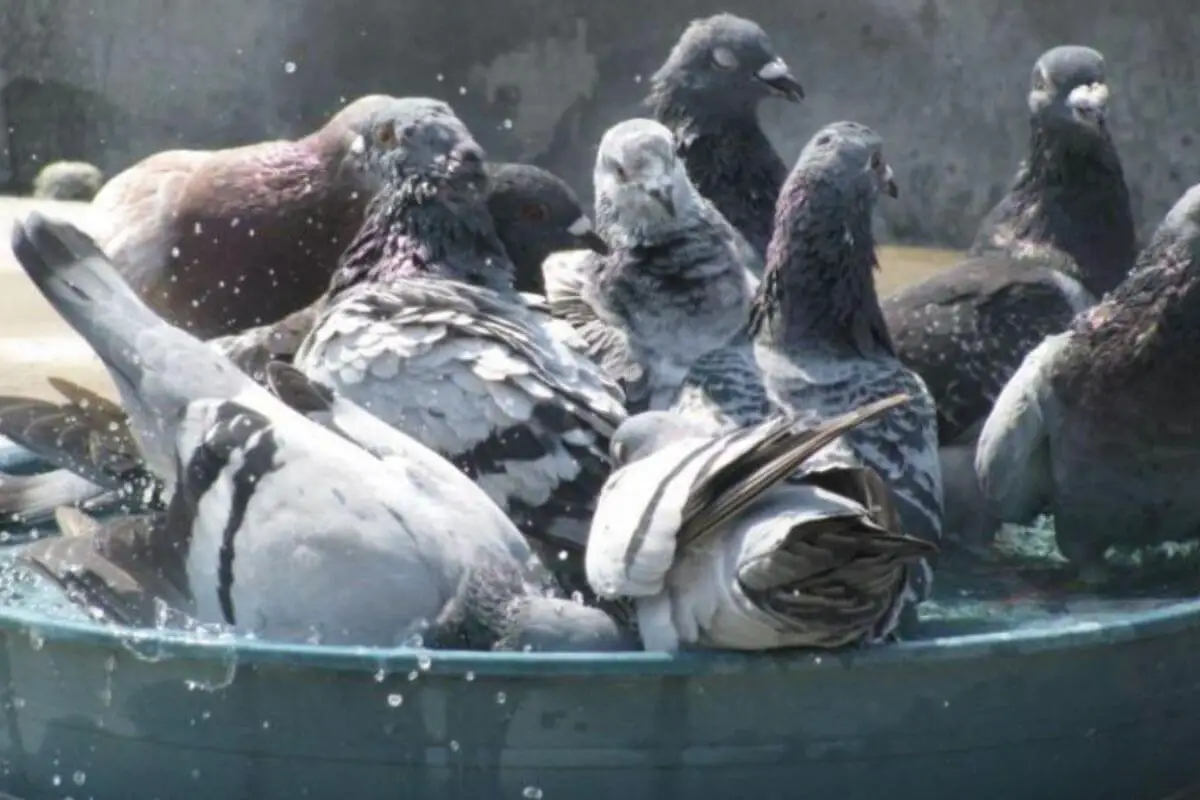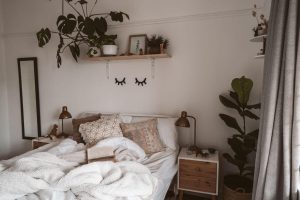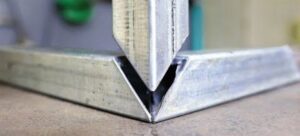Bathing a pigeon might seem like an unusual task, but for pigeon enthusiasts and pet owners, it’s an essential aspect of their care routine. Pigeons, like many birds, rely on regular baths to maintain optimal feather health and overall well-being. In this comprehensive guide, we’ll explore the art of bathing your pigeon, covering everything from why it’s crucial to the step-by-step process that ensures a gentle and stress-free experience for your feathered friend.
I. Understanding the Importance of Pigeon Baths
Bathing is not just a luxury but a vital aspect of a pigeon’s care routine. These seemingly simple water sessions play a crucial role in maintaining the health, comfort, and overall well-being of our avian companions. In this segment, we delve into the importance of pigeon baths and why they are far more than mere indulgence.
I. Feather Health Maintenance
A. Preening and Waterproofing
Pigeons, like many birds, are meticulous groomers. The act of bathing is closely followed by preening, a behavior where pigeons use their beaks to arrange and clean their feathers. This process serves to distribute natural oils, enhancing waterproofing and insulation of the plumage.

B. Removing Dirt and Debris
Bathing acts as a natural cleansing mechanism. Dust, dirt, and debris that accumulate on a pigeon’s feathers can be effectively removed during a bath. This not only ensures a pristine appearance but also contributes to the overall hygiene of the bird.
II. Cooling Mechanism
A. Thermoregulation
Unlike humans, pigeons lack sweat glands. Bathing serves as a vital thermoregulation mechanism, especially during warmer weather. The evaporation of water from their damp feathers helps cool their bodies, preventing overheating and contributing to their overall comfort.
B. Adaptation to Environmental Conditions
Pigeons have adapted to living in various environments, and their ability to regulate body temperature through bathing reflects their resilience. Whether in urban landscapes or natural habitats, pigeons instinctively utilize bathing as a means to adapt to changing climatic conditions.
III. Behavioral Significance
A. Natural Instincts
Bathing is deeply ingrained in a pigeon’s natural instincts. In the wild, pigeons seek out water sources for bathing to maintain feather health and regulate temperature. Captive pigeons, too, exhibit this innate behavior, emphasizing the importance of providing them with opportunities to bathe.
B. Social Bonding
In a flock, pigeons often engage in communal bathing. This social activity not only reinforces bonds within the group but also serves as a form of communication. Providing a bathing opportunity for domestic pigeons mirrors this communal instinct, contributing to their mental well-being.
IV. Stress Reduction
A. Alleviating Stress
Bathing can be a stress-relieving activity for pigeons. The soothing sensation of water, coupled with the gentle act of preening, creates a calming experience. This becomes particularly relevant in environments where pigeons may encounter stressors, such as loud noises or changes in routine.
B. Positive Mental Stimulation
The sensory stimulation provided by a bath offers positive mental engagement for pigeons. It stimulates their natural behaviors, fostering a sense of enrichment and preventing boredom, which is essential for the mental health of captive birds.
V. Beyond Feather Deep
In conclusion, pigeon baths are not mere indulgences but integral components of their physical and mental well-being. By understanding the multifaceted significance of bathing, we can provide our feathered companions with an environment that supports their natural instincts, enhances their health, and strengthens the bonds between pigeons and their caretakers.
So, as you witness your pigeon revel in its bath, recognize that you’re not just providing a refreshing dip but contributing to the intricate dance of nature that plays out in the simplest and most joyous moments of their lives.
II. Choosing the Right Time and Environment
A. Optimal Frequency
Pigeons generally enjoy bathing, and the frequency can depend on factors like climate and individual preferences. In warmer months, providing a bath two to three times a week is often ideal.
B. Safe and Calm Environment
Choose a time when your pigeon is calm and the environment is quiet. This reduces stress for the bird during the bathing process. Ensure the bathing area is secure, preventing escapes and providing a sense of safety.
III. Creating a Suitable Bathing Area
A. Shallow Container
Use a shallow container, like a wide, low-sided dish or a purpose-built bird bath. The water depth should be enough for the pigeon to stand comfortably while also allowing them to splash and immerse themselves.
B. Warm Water
Use lukewarm water for the bath. Pigeons, like many birds, prefer water that is neither too cold nor too hot. A temperature similar to their body temperature ensures a comfortable and enjoyable bathing experience.
IV. Introducing Your Pigeon to Bathing
A. Gradual Introduction
If your pigeon is new to bathing, introduce them gradually. Begin with a slightly damp cloth and gently stroke their feathers. As they become accustomed, you can progress to a shallow bath.
B. Encouragement and Rewards
Encourage your pigeon with a gentle voice and offer treats as positive reinforcement. Associating bath time with positive experiences helps build trust and makes future bathing sessions more enjoyable.
V. Observing Preening Behavior
A. Natural Preening
After the bath, pigeons engage in a thorough preening session. This behavior involves carefully arranging and cleaning each feather. Preening is essential for maintaining waterproofing and insulation of the plumage.
B. Providing a Drying Area
Ensure there’s a dry and warm area for your pigeon to complete their preening and drying process. Pigeons are meticulous groomers, and allowing them the time and space to finish this ritual is integral to their well-being.
VI. Special Considerations
A. Molting Periods
During molting periods, when pigeons shed old feathers and grow new ones, they might appreciate more frequent baths. Molting can be uncomfortable, and bathing provides relief and aids in the removal of loose feathers.
B. Health Check
Bathing also offers an opportunity for a quick health check. Observe your pigeon for any signs of abnormalities, such as skin irritations or changes in feather quality. Early detection can prompt timely veterinary care.
VII. Conclusion: Nurturing Well-Being Through Bathing
In conclusion, bathing your pigeon is a simple yet crucial aspect of their care routine. It not only contributes to their feather health and comfort but also strengthens the bond between you and your avian companion. By understanding their natural behaviors, creating a suitable bathing environment, and introducing them gradually, you ensure that the bathing experience is a positive and enriching one for your pigeon.
So, embrace the gentle art of pigeon bathing, relish in the joy it brings to your feathered friend, and revel in the shared moments of care and companionship.
VIII. Common Mistakes to Avoid
A. Overcrowding
Avoid overcrowding the bathing area, especially if you have multiple pigeons. Each pigeon should have sufficient space to bathe comfortably without feeling crowded or stressed. If you have multiple pigeons, consider providing individual bathing opportunities.
B. Forceful Approaches
Never force a pigeon into the water or make sudden movements that could startle them. This can lead to stress and fear, making future bathing experiences challenging. Patience and gentle encouragement are key to fostering a positive association with bathing.
IX. Seasonal Considerations
A. Winter Bathing
During colder seasons, adjust the bathing frequency. Pigeons may be less inclined to bathe in chilly weather, so offering warm water and reducing the frequency during winter can accommodate their preferences.
B. Sheltered Bathing
If your pigeon is hesitant to bathe outdoors, consider creating a sheltered bathing area indoors. This can be a shallow container placed in a secure and calm indoor space, allowing your pigeon to enjoy bathing without exposure to outdoor elements.
X. Bonding During Bath Time
A. Hands-Off Approach
While encouraging your pigeon during bath time is essential, avoid a hands-on approach during the actual bathing process. Pigeons generally prefer to bathe independently, and imposing physical contact can lead to discomfort.
B. Positive Reinforcement
Continue to provide positive reinforcement during and after the bath. Verbal praise, a soothing tone, and treats create a positive association with the bathing experience, reinforcing trust and strengthening your bond.
XI. Adjusting to Individual Preferences
A. Observing Behavioral Cues
Pay attention to your pigeon’s behavioral cues. Some pigeons may prefer a quick splash, while others may enjoy a more prolonged bathing session. Adjust the bathing routine based on your pigeon’s individual preferences and comfort level.
B. Consistency in Routine
Maintain consistency in your bathing routine. Pigeons thrive on predictability, and a regular schedule for baths helps them feel secure and in control of their environment.
XII. Providing Post-Bath Comfort
A. Drying Area
Ensure the drying area is draft-free and warm. Pigeons appreciate a cozy spot to complete their post-bath preening and drying process. Avoid exposing them to cold drafts, which could negate the benefits of the bath.
B. Monitoring Aftercare
Keep an eye on your pigeon after the bath. While preening is a natural behavior, excessive scratching or signs of distress might indicate skin irritation or discomfort. Promptly address any concerns or seek veterinary advice if needed.
XIII. Celebrating the Joy of Bathing
In conclusion, bathing your pigeon is a delightful routine that enhances their physical well-being and provides moments of shared joy. Through a combination of understanding their natural behaviors, creating a suitable bathing environment, and respecting individual preferences, you contribute to the overall happiness and health of your feathered companion.
So, revel in the simple pleasure of watching your pigeon enjoy their bath, appreciate the unique bond you share, and cherish these moments of care and connection in the wonderful world of pigeon companionship.
Frequently Asked Questions (FAQs) about Bathing Your Pigeon
How often should I bathe my pigeon?
The frequency of pigeon baths depends on factors like climate and individual preferences. In warmer months, 2-3 times a week is often suitable, while adjustments may be needed during colder seasons.
What is the best time to bathe my pigeon?
Choose a time when your pigeon is calm, and the environment is quiet. Pigeons generally enjoy bathing, so finding a time when they are relaxed contributes to a positive bathing experience.
Can I use regular tap water for pigeon baths?
Yes, tap water is suitable for pigeon baths. Ensure the water is lukewarm, similar to their body temperature, to create a comfortable bathing experience.
How do I introduce a hesitant pigeon to bathing?
Introduce bathing gradually. Start with a slightly damp cloth, and as your pigeon becomes more accustomed, progress to a shallow bath. Positive reinforcement, such as treats and a soothing voice, can encourage a hesitant pigeon.
Should I bathe my pigeon during molting periods?
Yes, pigeons often appreciate more frequent baths during molting periods. Bathing provides relief during this uncomfortable phase and aids in removing loose feathers.
Can I use soap or shampoo for pigeon baths?
Avoid using soap or shampoo for pigeon baths. Pigeons have a preening process after the bath that distributes natural oils, and using soap can interfere with this natural grooming.
How long should a pigeon stay in the bath?
The duration varies based on individual preferences. Some pigeons may prefer a quick splash, while others enjoy a more extended bathing session. Observe your pigeon’s behavior to determine their comfort level.
Can I bathe my pigeon in winter?
Adjust the bathing routine during winter. Pigeons may be less inclined to bathe in colder weather, so offering warm water and reducing the frequency can accommodate their preferences.
What if my pigeon is hesitant to bathe outdoors?
Create a sheltered bathing area indoors. A shallow container placed in a calm indoor space allows your pigeon to enjoy bathing without exposure to outdoor elements.
Are there signs of discomfort during or after bathing?
Watch for signs like excessive scratching or distress. While preening is natural, any unusual behavior might indicate discomfort or skin irritation. Promptly address concerns or consult with a veterinarian if needed.



